By the late spring of 1944, Nazi Germany was being squeezed from two sides. Allied forces in Western Europe had slowed Adolph Hitler’s ruthless and relentless campaign of conquest and murder across the continent. In the East, the Russians were putting enormous pressure on German forces who were locked in a brutal war of attrition. Nazi Germany, however, was still firmly lodged in the continental fortress it had created, and scores of conquered nations were suffering under the brutality of their occupation.
Then came D-Day.
On that day, Allied planes, ships, vehicles, supplies, and men from the U.K., U.S., France, and Canada stormed the coast of occupied France’s Normandy region in numbers so staggering that they’re hard to comprehend. The most massive undertaking in the history of warfare, the Normandy landings—or D-Day—were years in the making. Supported by meticulous planning and cunning deception, D-Day was a gargantuan effort to dislodge from Europe one of the most effective and destructive war machines ever assembled.
For the individual human beings who stormed the beaches, however, it was a day of chaos, terror, and death. Normandy became the final resting place for thousands.
The initial punch of the D-Day landings was the start of a grueling, monthslong battle that culminated with the liberation of Nazi-occupied Paris. The German defenders, however, did everything they could to prevent that from happening. The Nazis used the wealth they plundered from the countries they conquered—not to mention armies of slave laborers they captured—to construct defensive fortifications that remain among the largest and most robust military entrenchments ever built. Those fortifications were manned by well-armed and battle-hardened German troops who fought savagely to defend the real estate they were charged with holding.
The result was one of the most epic battles in human history.

It was the largest amphibious assault in history
Although it’s based in mythology, the Greek siege of ancient Troy is probably the most famous and romanticized amphibious assault in history. The Normandy invasion, however, was very real, and it was the largest water-borne attack ever to take place on any shoreline anywhere at any time.
[Pictured: Robert Sargent’s iconic D-Day photograph “Into the Jaws of Death.”]

The ‘D’ in D-Day is redundant
The “D” in D-Day stands for “Day,” the traditional military protocol used to indicate the day of a major operation. The day before D-Day, June 5, was D-1. The day after, June 7, was D+1.
[Pictured: Gen. Dwight D. Eisenhower gives the order of the day, “Full victory, nothing else,” to paratroopers in England prior to the Normandy invasion.]
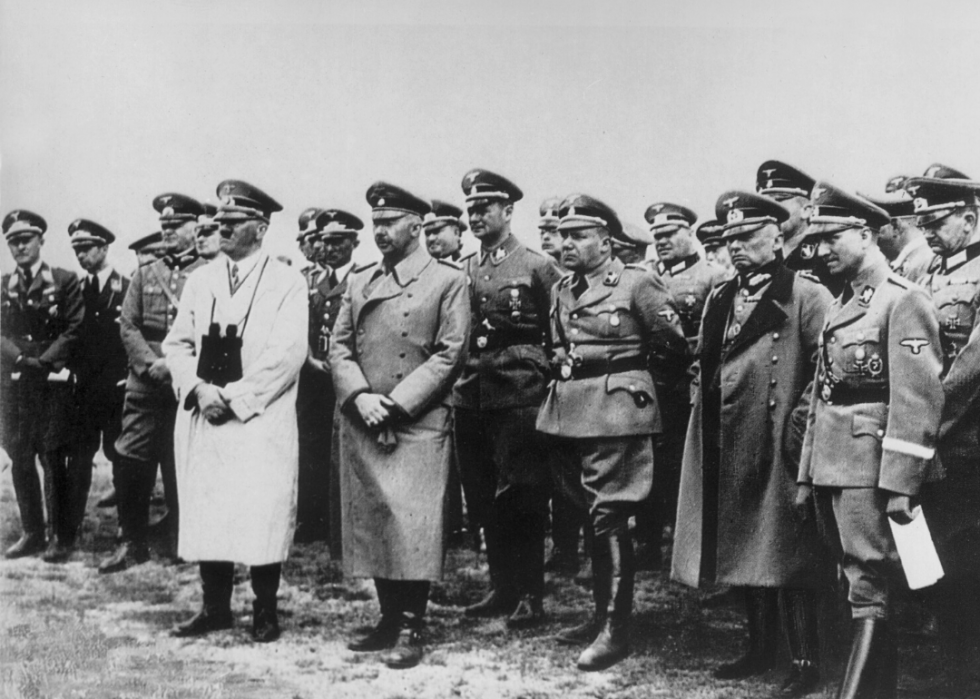
Secrecy and deception were key
In what the Saturday Evening Post calls “the century’s best-kept secret,” the Allies bluffed the enemy with a yearslong series of elaborate ruses known collectively as Operation Fortitude, which was designed to trick the Germans as to Allied intentions. They spread misinformation through false news reports, planted intelligence, and false radio broadcasts that were designed to be intercepted by the enemy. They also created fake armored columns of make-believe tanks comprised of wood and rubber, fake troop encampments, and launched fleets of inflatable dummy warships.
[Pictured: Nazi leader Adolf Hitler stands with Heinrich Himmler and staff while looking across the English Channel from Calais in August 1940.]
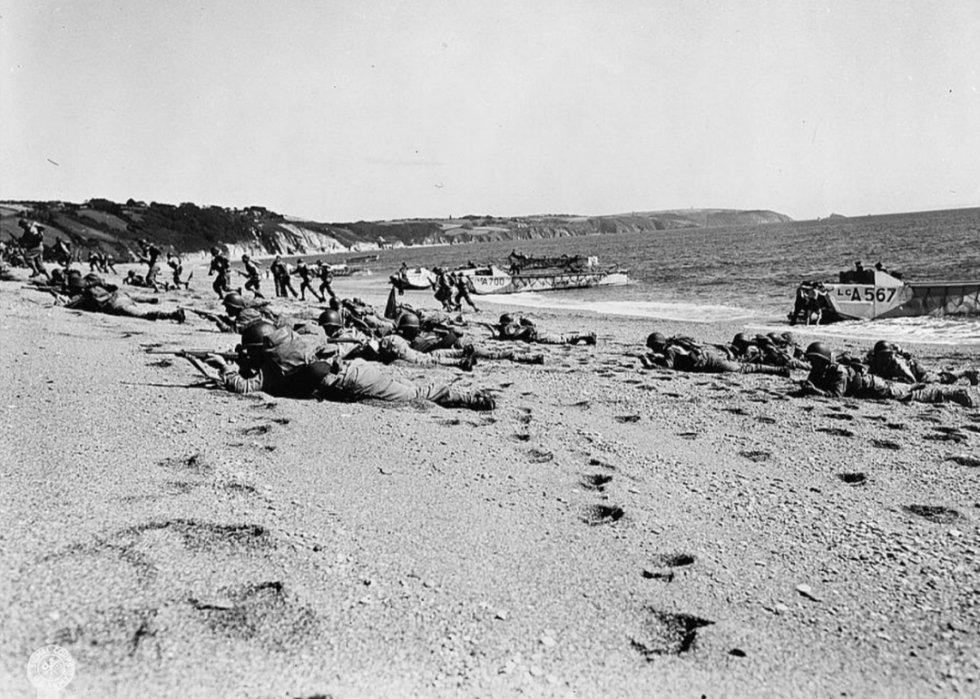
The practice run turned deadly
Called Exercise Tiger, a D-Day dress rehearsal proved as fatal as Omaha Beach to around 700 Allied sailors and soldiers who died in a training exercise at a friendly British beach. Speedy German attack vessels called E-boats became aware of the maneuver and attacked the Allied flotilla, sinking several ships with torpedoes. Some survivors who went on to storm the beaches of Normandy later recalled that the Exercise Tiger fiasco was more terrifying than D-Day itself.
[Pictured: American troops on Slapton Sands in England during a training exercise.]

Forces landed on five code-named beaches
The landing zones were code-named as part of the massive effort to maintain secrecy. The Americans landed at Omaha and Utah beaches, the British at Gold and Sword, and the Canadians and British at Juno Beach.
[Pictured: Map details the Allied Invasion of Normandy.]
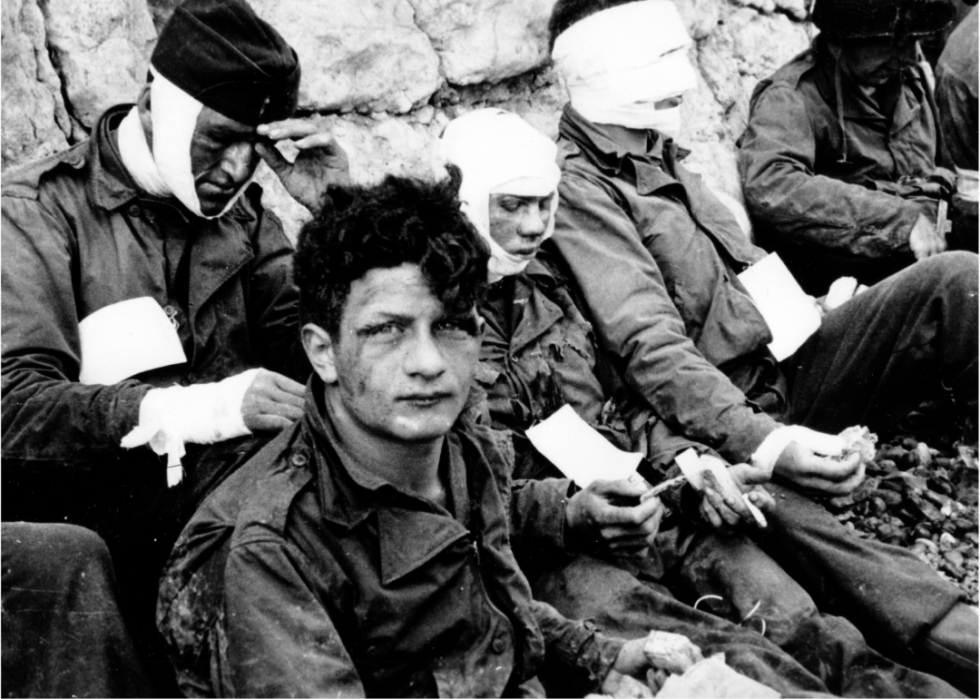
Omaha Beach was the hardest fought
The movie “Saving Private Ryan” depicts events that took place at Omaha Beach, the deadliest of all five landing zones and one where the German defenses remained almost entirely intact. The first infantry wave at Omaha experienced the worst carnage of the D-Day campaign, with large sections of entire companies killed or drowned before ever reaching the shore or firing a shot. In the end, U.S. forces suffered 2,400 casualties on Omaha Beach.
[Pictured: American assault troops of the 3d Battalion, 16th Infantry Regiment, 1st U.S. Infantry Division, who stormed Omaha Beach on June 6, 1944.]
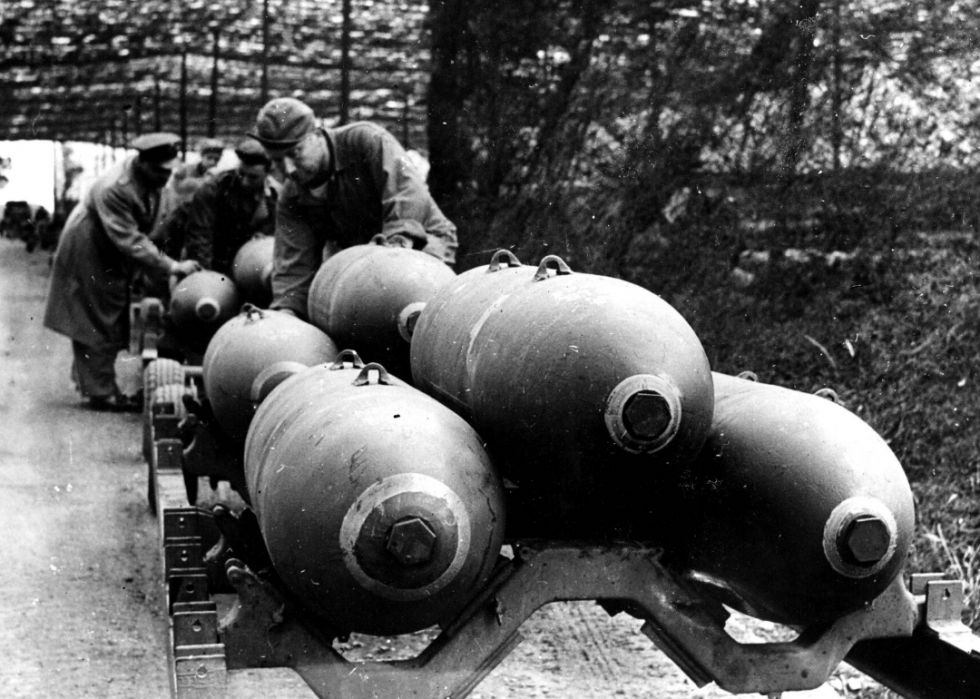
A massive bombardment preceded the invasion
The mighty German Atlantic Wall and its sprawling coastal fortifications were the targets of a crushing Allied aerial bombardment that preceded the infantry invasion. On June 6 shortly after midnight, 2,200 Allied bombers attacked German positions to soften the landing zones for amphibious troops. One of the reasons that Omaha Beach was so bloody is that thick cloud coverage in that area rendered the bombing campaign at Omaha ineffective, leaving enemy infrastructure—and guns—in perfect working order.
[Pictured: Soldiers load 2,000-pound bombs on aircraft in England prior to D-Day.]
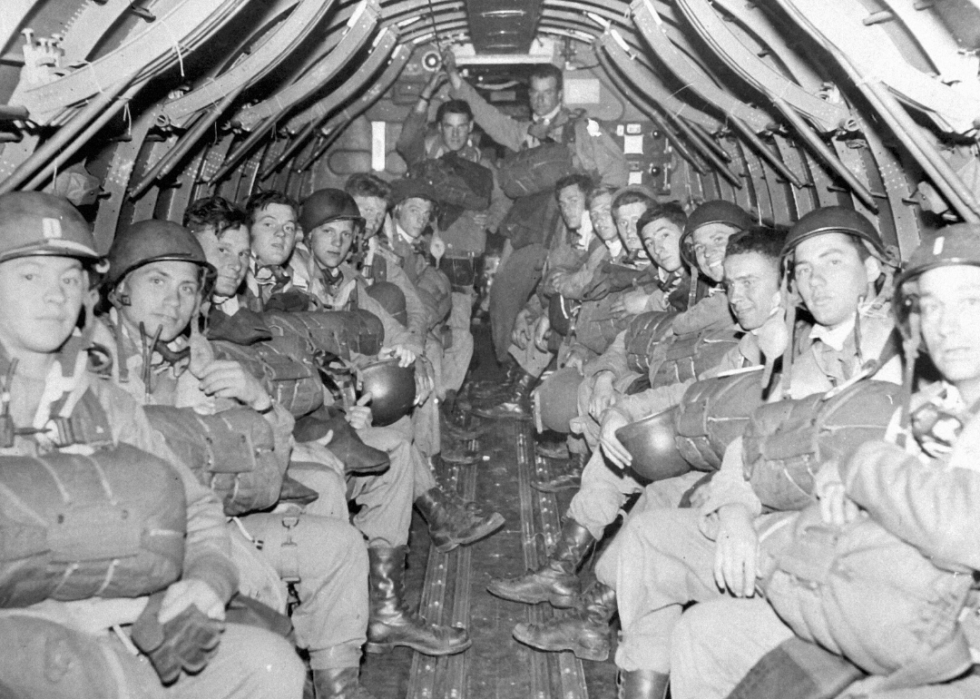
Thousands of paratroopers landed first
After the aerial bombardment but before the beach landings, 24,000 American, Canadian, and British paratroopers parachuted in behind enemy lines to secure the beaches’ exits. The same heavy cloud coverage that hindered the Omaha Beach bombardment also foiled the paratroopers. Many units ended up far away from their intended landing zones amid the chaos.
[Pictured: A U.S. infantry paratroop regiment are shown inside a C-47 transport in England in the early hours of June 6, 1944.]
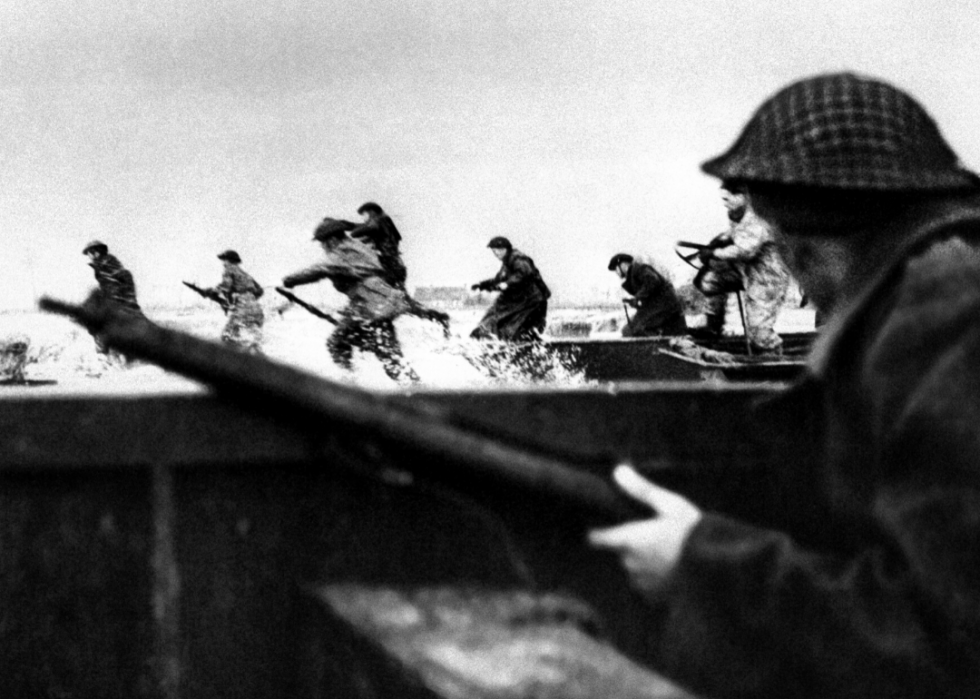
Canadian forces captured the most ground
The Canadians attacking Juno Beach suffered carnage similar to what the Americans experienced at Omaha, particularly the first wave of troops, many of whom died before reaching the shore thanks to rough seas and relentless Nazi artillery. In the end, however, it was the Canadians who captured more towns, more strategic positions, and more ground than any other battalions.
[Pictured: Canadian soldiers land on the beach in Normandy, France, on June 6, 1944.]
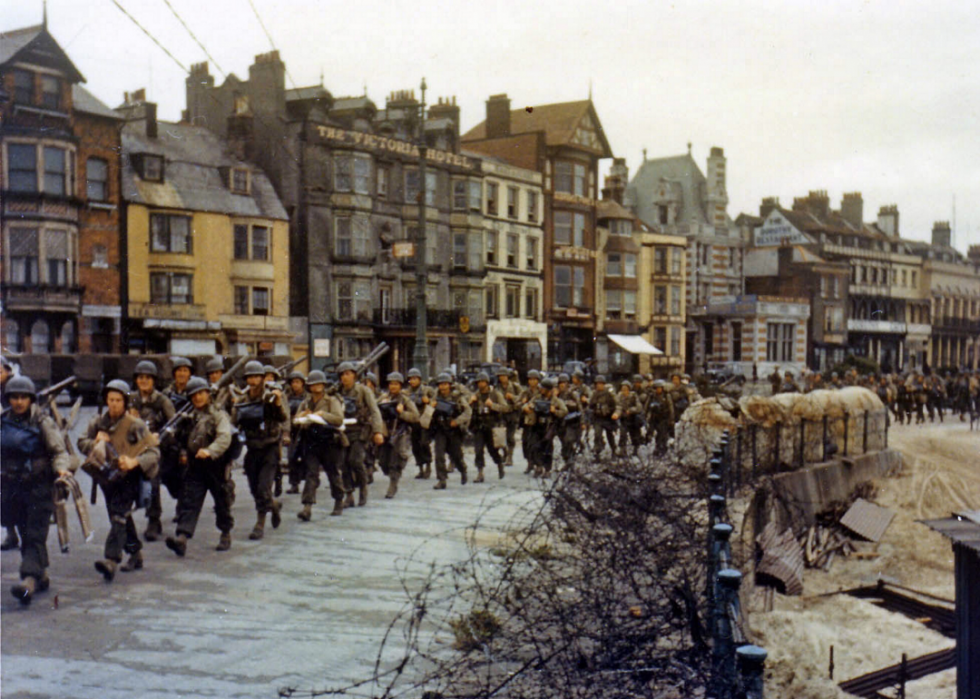
The operation had a code name
Like the beaches and landing zones themselves, the invasion as a whole had a code name. What history knows as the Battle of Normandy was called Operation Overlord by Allied planners. The initial beach landings on D-Day were called Operation Neptune.
[Pictured: U.S. troops prepare to board landing ships in Weymouth, England, prior to D-Day.]
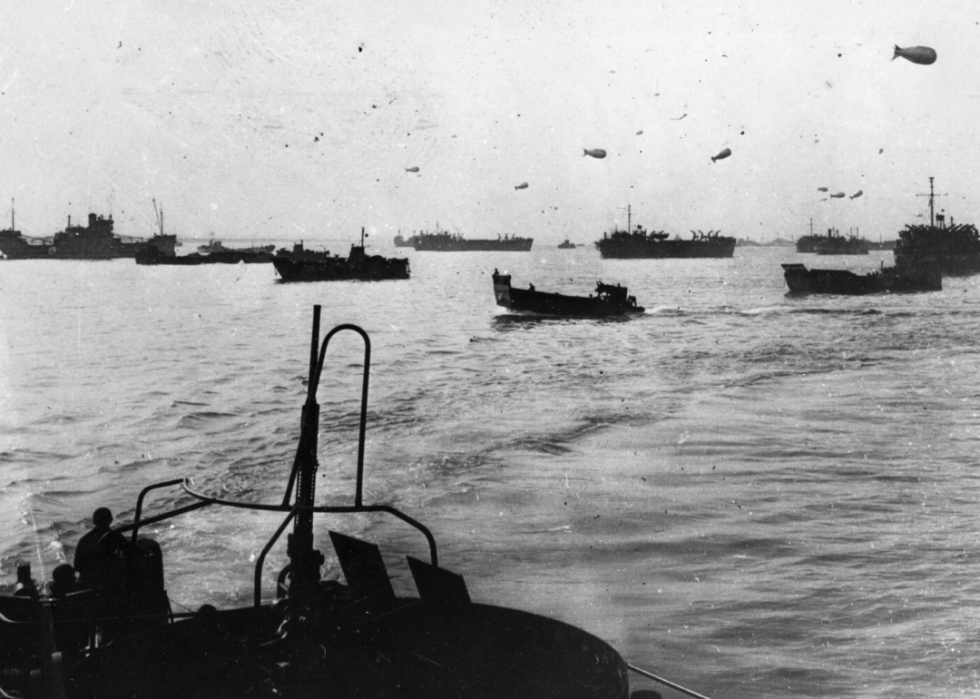
D-Day involved nearly 7,000 Allied ships…
The beach invasion involved an unprecedented 6,939 ships and other vessels. Eighty percent of them were British.
[Pictured: Allied landing craft protected by barrage balloons cross the English Channel on June 6, 1944.]
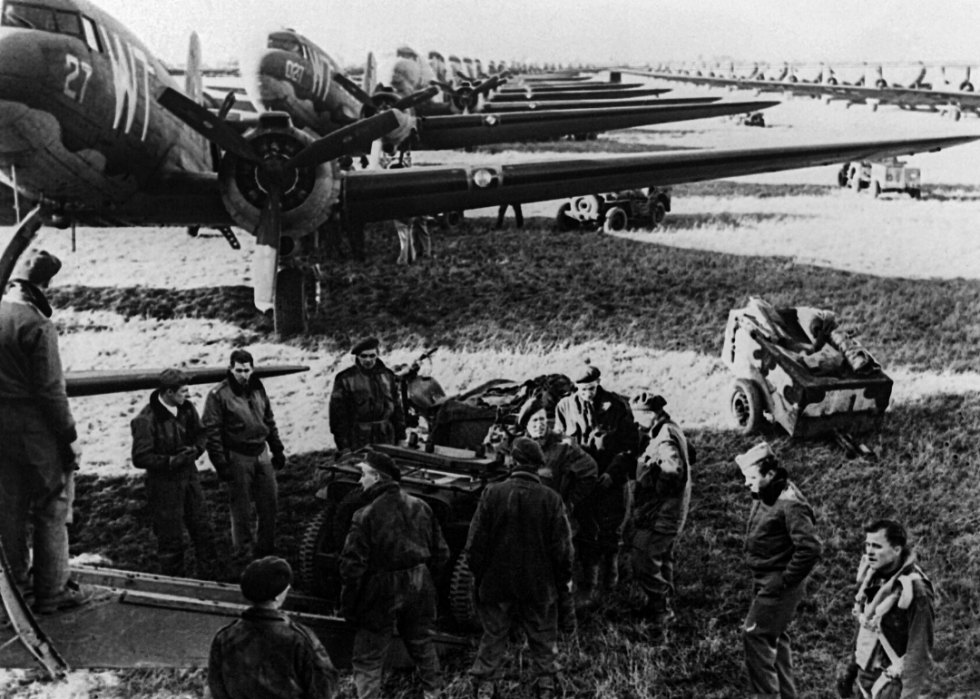
…and more than 11,500 Allied aircraft
The operation also included 11,590 aircraft. They supported the naval fleets, dropped off paratroopers, conducted reconnaissance, and bombarded Nazi defensive positions.
[Pictured: Allied aircrews work around C-47 transport planes shortly before D-Day.]
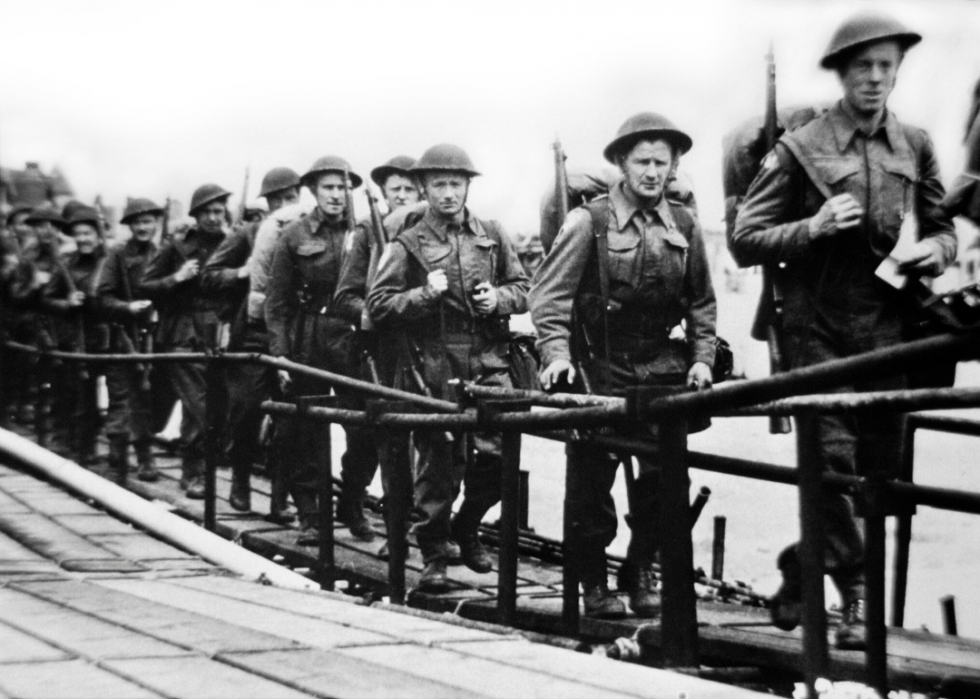
There were 73,000 Americans at D-Day
Along with the Americans were 61,715 British Allied liberators and 21,400 Canadian troops. In total, 156,115 Allied troops stormed the beaches of Normandy.
[Pictured: British troops embark at Southsea, Portsmouth, England, on June 5, 1944.]

Comanche ‘code-talkers’ joined the siege
The U.S. government enlisted the service of now-famous Comanche “code-talkers” in both World War I and World War II. Using their native tribal language, they developed a secret messaging code that proved unbreakable for the Germans. Thirteen of these cod-talkers were among the Allied soldiers landing at Normandy.
[Pictured: Comanche code-talkers of the 4th Signal Company stand for a portrait.]

The Allies faced 50,000 German defenders
Dug into the massive structures of the Atlantic Wall were roughly 50,000 German defenders. Bristling with weaponry and ordered to hold their ground at all cost, they were among the hardest and most seasoned veterans in the Nazi war machine.
[Pictured: Allied ships are attacked by German fighters on June 6, 1944.]

The battle lasted until August
D-Day was only the start of the long and brutal Battle of Normandy, which raged until the end of August. In terms of average daily casualties, the campaign was bloodier than the infamous Battle of the Somme during World War I.
[Pictured: American howitzers shell German forces retreating near Carentan, France, on July 11, 1944.]

The exact number of fallen is unknown
It’s believed that 4,413 Allied troops were killed on D-Day, but reliable records of German fatalities are much harder to come by. Estimates range between 4,000–9,000 Germans were killed on June 6, 1944.
»»» Free National Prayer Gold Coin for American Patriots – How to Get It
[Pictured: British engineers fill the wreck of a German tank with landmines in order to destroy it after the allies recaptured the village of Villers-Bocage in Normandy, France, in August 1944.]

The operation led to the liberation of Paris
On Aug. 8, the Germans staged a last-ditch counterattack that the Allies repelled. It was the beginning of the end of the Nazi occupation of France. The Allies finally broke out of Normandy a week later on Aug. 15 and on Aug. 25, they liberated Paris.
[Pictured: American troops parade through the Arc de Triomphe during the liberation of Paris on Aug. 25, 1944.]

A memorial cemetery sits on US soil in France
Most of the 9,387 Americans buried at the Normandy American Cemetery were killed on D-Day or in the early stages of the Allied fight to establish a beachhead. It’s one of 14 permanent World War II military cemeteries the American Battle Monuments Commission built on foreign soil. It sits on land granted to the United States by France.
[Pictured: An American cemetery in Normandy, France.]
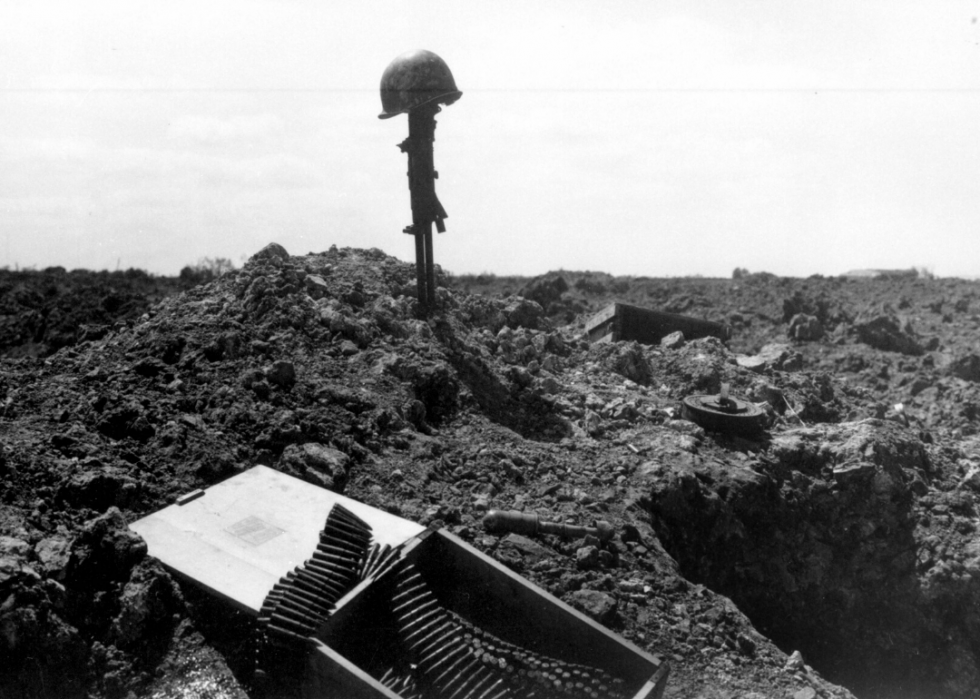
Around 14,000 corpses were returned home
There used to be far more fallen servicemen buried at the cemetery and in the surrounding region. Remains of roughly 14,000 people were returned home at the request of their families.
[Pictured: A rifle and helmet mark the site of a fallen soldier in Normandy.]
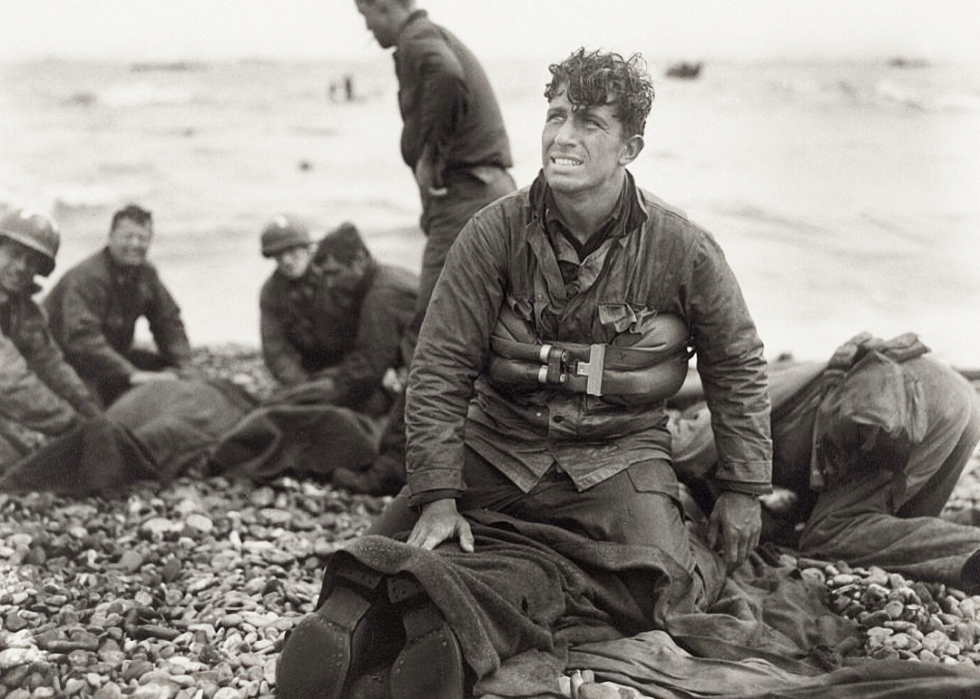
The Allies lost more than 11% of their troops
The Battle of Normandy caused more than 226,386 casualties of the 2 million-plus Allied liberators. Of those, 72,911 were either killed or missing and 153,475 were wounded.
[Pictured: Second Lieutenant Walter Sidlowski of 348th Engineer C Battalion, 5th Engineer Special Brigade, on Omaha Beach, after helping to rescue a group of drowning soldiers.]
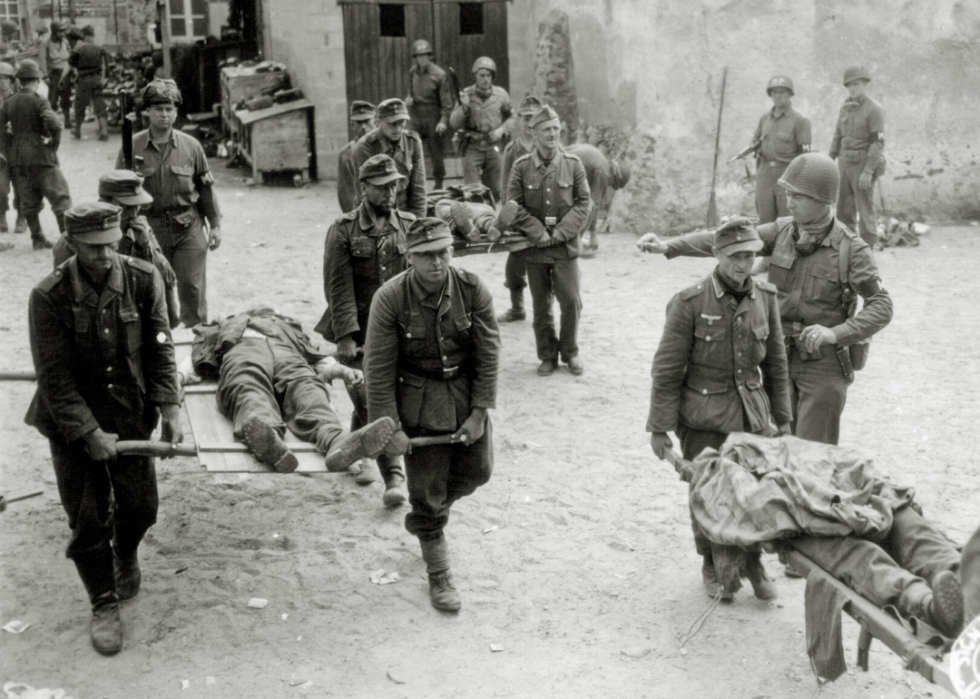
German casualties exceeded 240k
The Nazi defenders suffered similar losses, with German casualties topping 240,000 throughout the Battle of Normandy. The Allies also captured more than 200,000 German prisoners.
[Pictured: German prisoners carry their fallen comrades to the cemetery in Bréhal, France, in July 1944.]
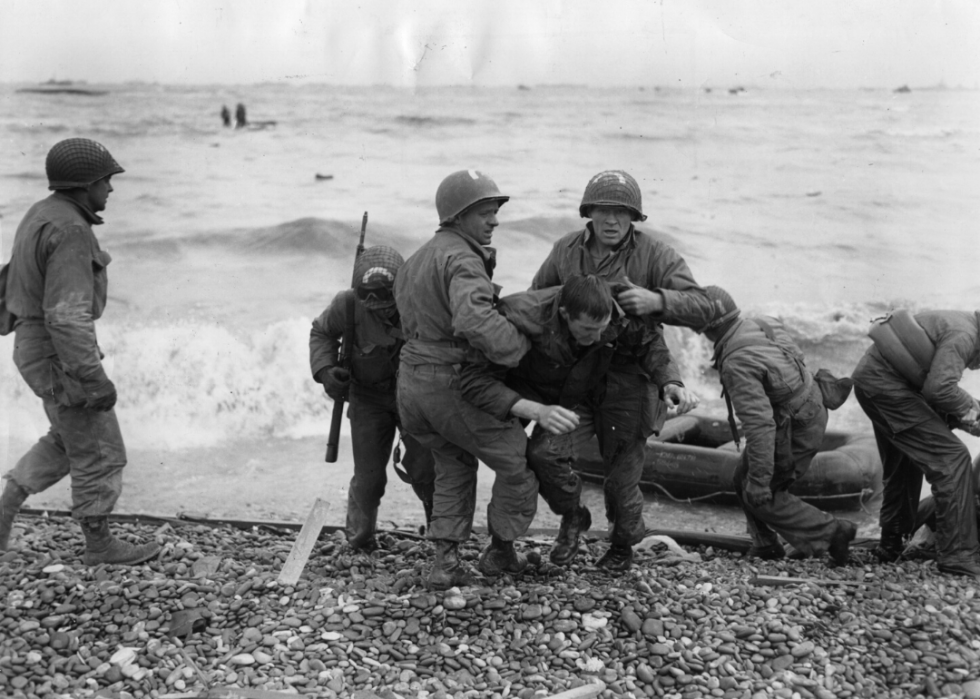
The action was far from consistent
Allied troops on D-Day had radically different experiences depending on where they landed. In some places along the 50-mile front, there were almost no casualties at all. In other places, casualty rates were as high as 96%.
[Pictured: American soldiers help the wounded come to shore during the Allied invasion on June 6, 1944.]
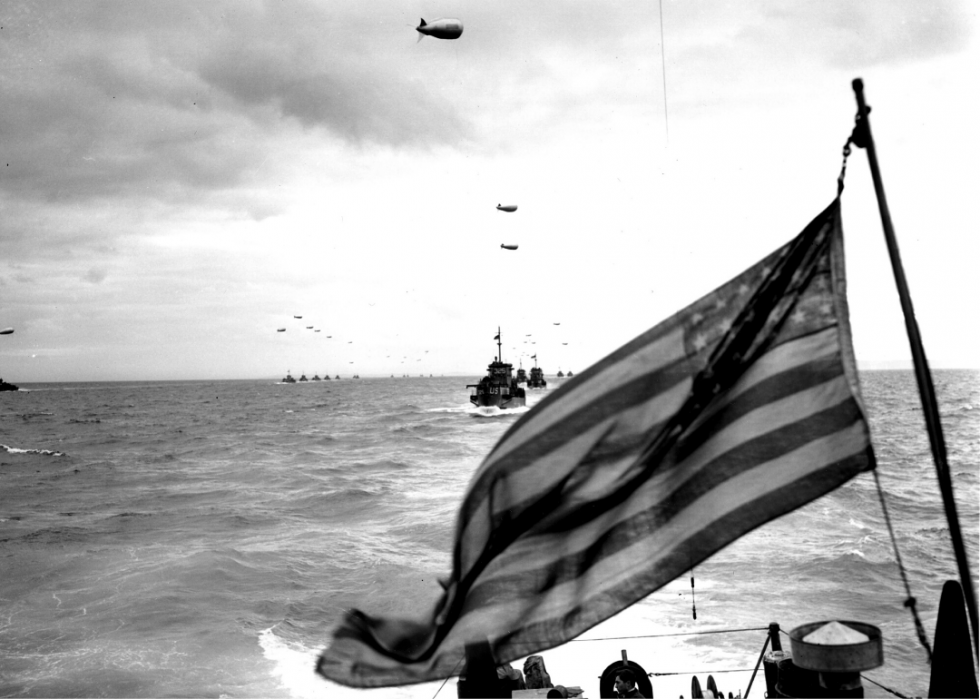
The tide was a double-edged sword
The planning for an operation of this magnitude required a meticulous consideration of an uncountable number of details and variables. If the attack happened at high tide, for example, landing craft might hit submerged German obstacles. If the Allies landed at low tide—the course that planners eventually chose—they would avoid those obstacles but troops would be forced to sprint the length of the beach with no cover under relentless fire.
[Pictured: Columns of Coast Guard LCIs protected by barrage balloons advance across the English Channel on June 6, 1944.]
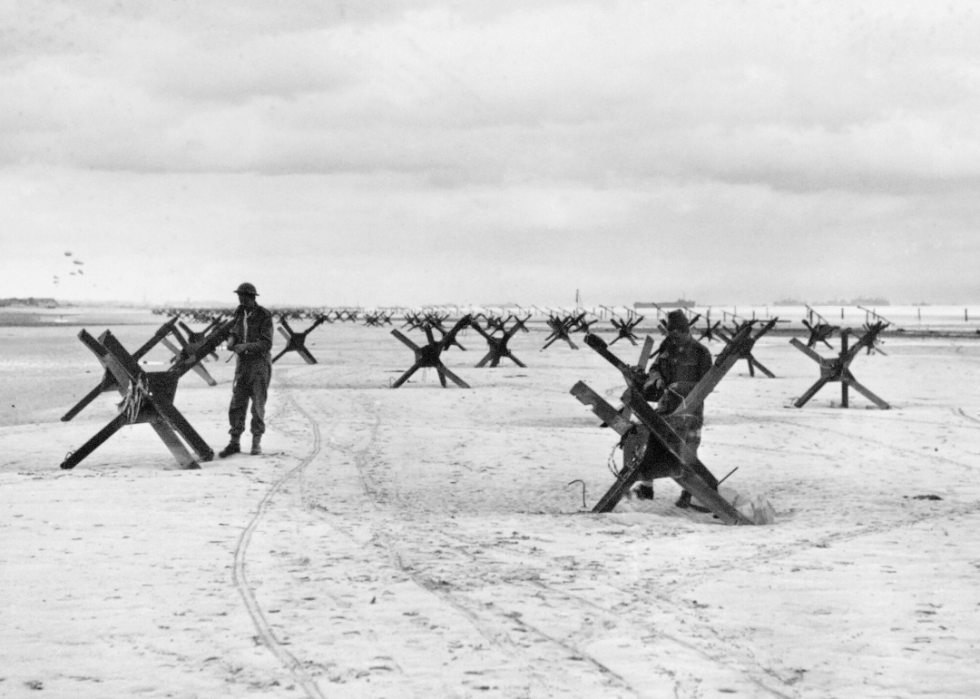
The beach was a minefield
The most enduring images of D-Day are of exposed Allied troops being raked down by machine-gun fire from elevated German positions—and machine guns certainly caused a hideous number of casualties. Death and danger, however, didn’t only come from above. It’s estimated that the Germans planted roughly 4 million landmines on the Normandy beaches, making every footstep a potential catastrophe for every soldier.
[Pictured: Royal Marine Commandos prepare to demolish German obstacles on a beach in Normandy in June 1944.]
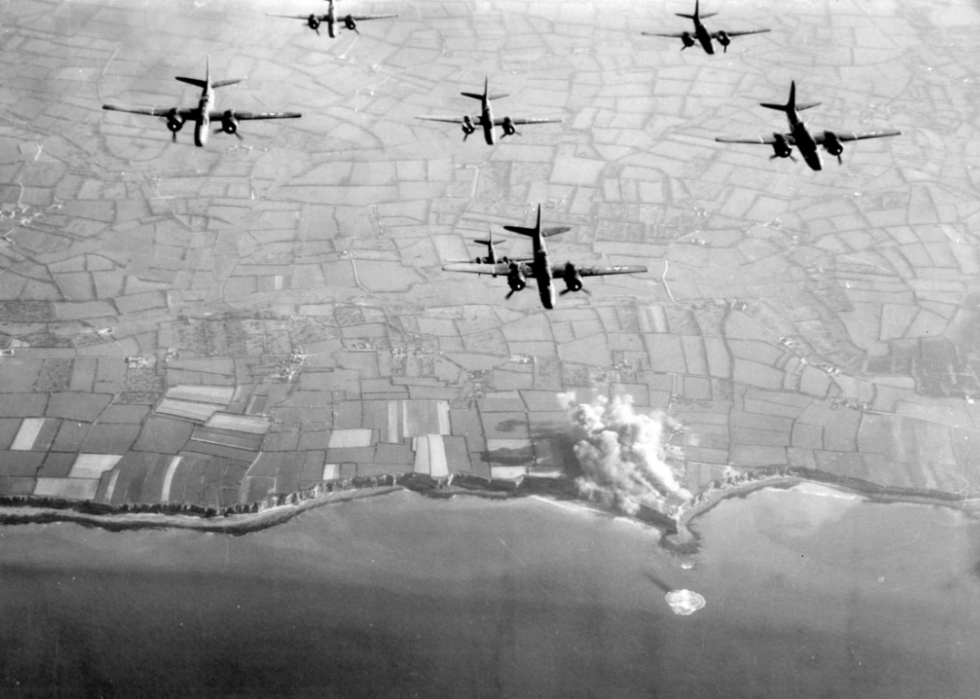
D-Day was the result of trial and error
U.S. and British commanders reviewed plans for Operation Overlord at the Quadrant Conference in 1943. The seeds of D-Day, however, were planted the year before. In 1942, the Allies suffered heavy losses during a failed raid on French port, a moment that persuaded military strategists to plan for beach landings, instead.
[Pictured: Aircraft complete a pre-invasion bombing of Pointe du Hoc over Normandy, France.]

The Germans almost guessed it right
The Germans knew that a sea-based attack in Northern France was imminent, they just didn’t know where. They concentrated their forces near a place called Calais because it was at the English Channel’s thinnest point. It was the logical move, but Supreme Allied Commander Gen. Dwight D. Eisenhower was a step ahead and chose Normandy because it was west of that obvious landing point.
[Pictured: Airmen of the U.S. 8th AAF paint their bombs before setting off for a raid over Caen and Calais, France, on June 12, 1944.]
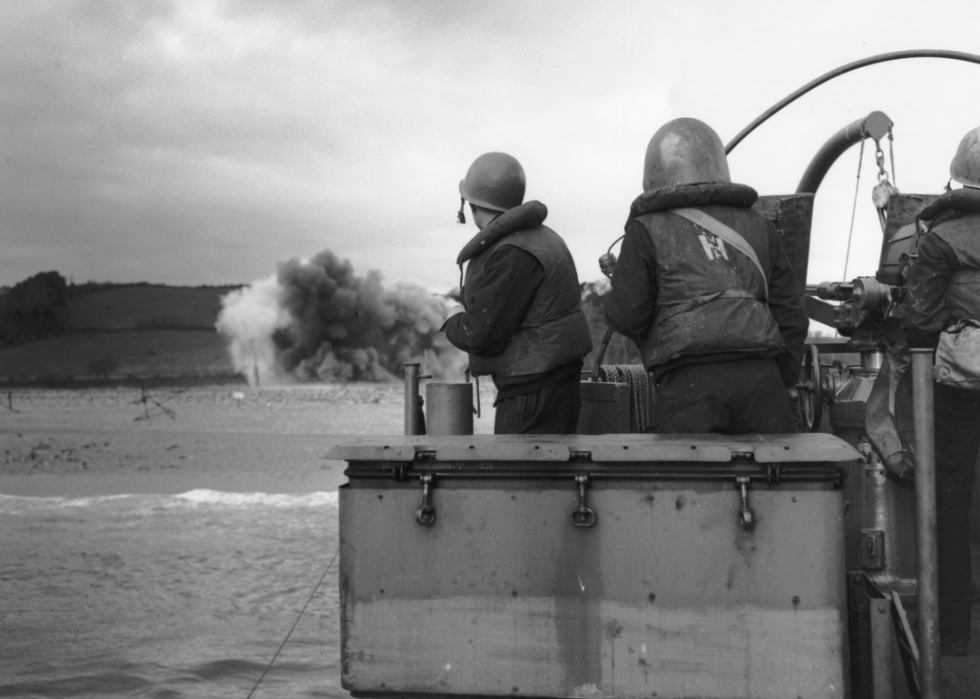
Nature played a key role
Poor weather almost caused another delay in June, but this time, Eisenhower decided to attack. Relying on natural illumination, the Allies had to invade during a full moon, and by June 5, that window was beginning to close. Eisenhower ordered the attack for the following day both despite the bad weather and because of it—not only did they still have the crucial full moon, but angry skies kept German planes grounded.
[Pictured: An LCI noses into the beach as a German mine explodes off the bow on June 6, 1944.]
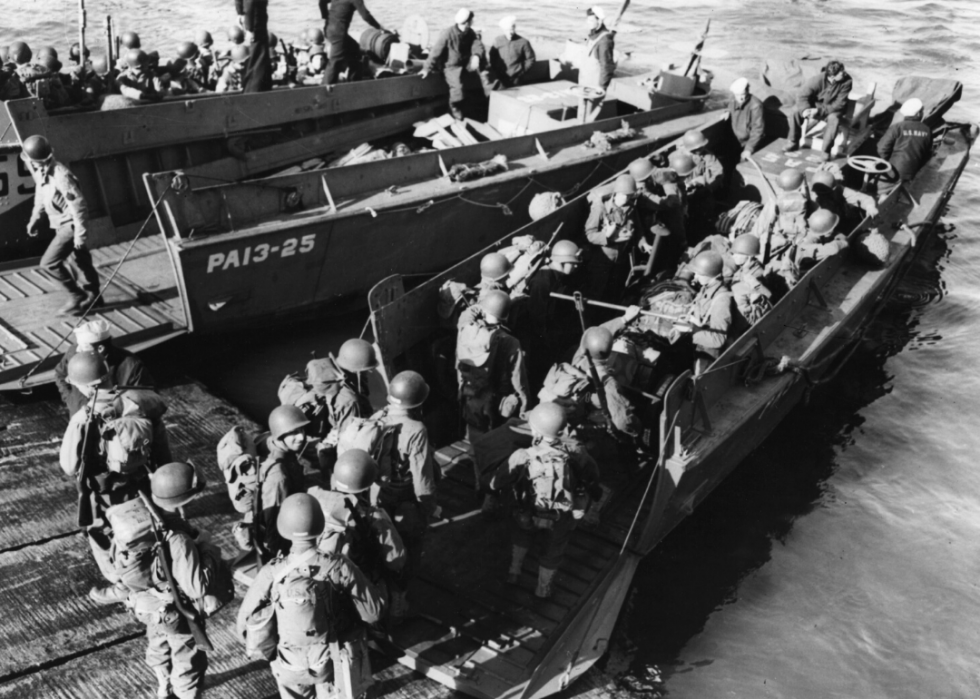
Higgins boats whisked many troops to shore
Fleets of now-iconic Higgins boats ferried most men ashore on D-Day. Technically called LCVP for “landing craft vehicles and personnel,” the vessels were designed and built by an ambitious and eccentric Irish-American industrialist named Andrew Higgins. Made from wood and steel, Higgins boats were simple, practical, reliable, and easy to mass-produce—in 1964, Eisenhower famously credited Higgins and his efforts with winning the war.
[Pictured: American troops board their Landing Craft Vehicle-Personnel at Torquay Hards, England, on June 3, 1944.]
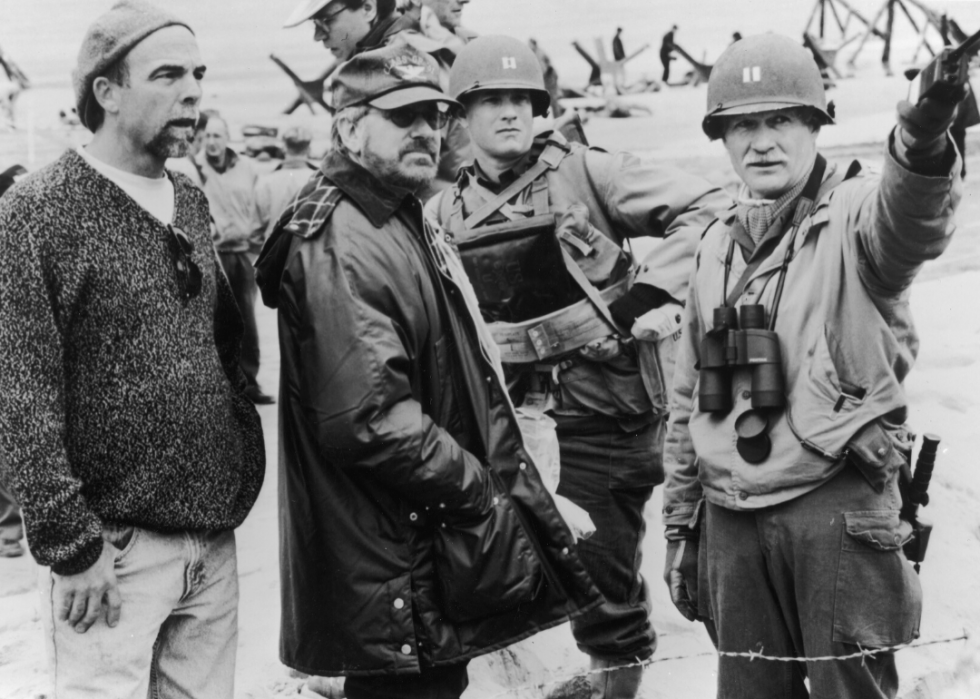
D-Day films have become part of American popular culture
The Normandy invasion has been the subject of countless movies and television series, some of which are considered to be among the finest films ever made. At the top of nearly every D-Day movie best-of list is Steven Spielberg’s “Saving Private Ryan.” In one of the most notorious episodes in Oscars history, the celebrated Normandy epic lost out to Harvey Weinstein’s “Shakespeare in Love” for Best Picture at the 1999 Academy Awards after the now-disgraced producer muscled his period piece through with a campaign of back-room bullying and politicking.
[Pictured: Director Steven Spielberg and actor Tom Hanks at work on the set of “Saving Private Ryan” in 1998.]
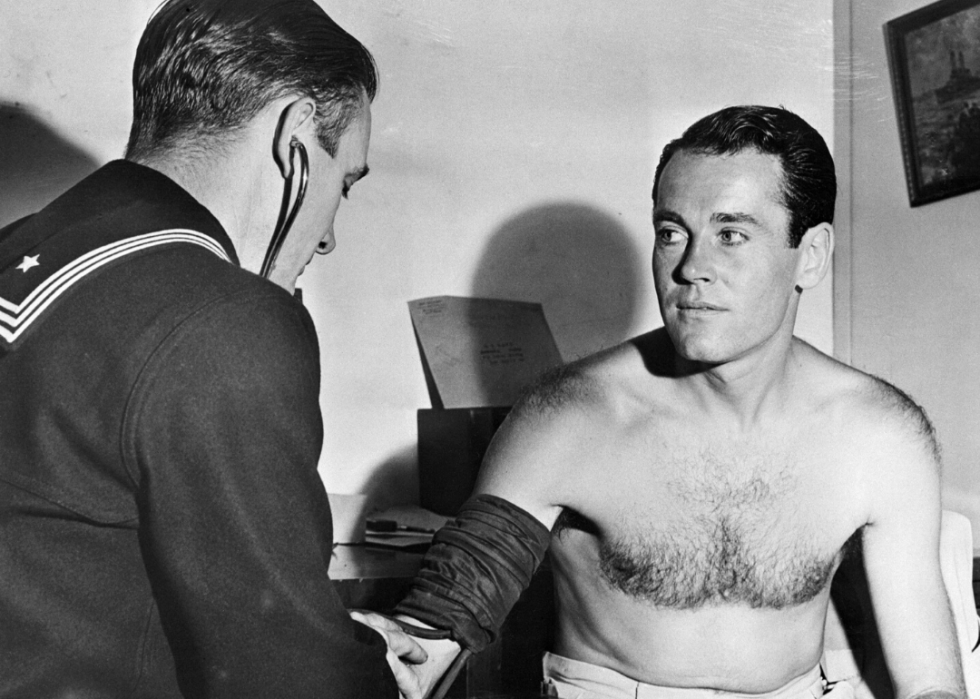
A D-Day movie star served on D-Day
Actor Henry Fonda was 37 in 1942 when he enlisted for service. On D-Day, he served as quartermaster on the USS Satterlee, an American destroyer. He went on to star in “The Longest Day,” a 1962 film that, along with “Saving Private Ryan,” is consistently ranked near the top of the list of best D-Day movies—and war movies in general—of all time.
[Pictured: Actor Henry Fonda gets a Navy physical in August 1942.]
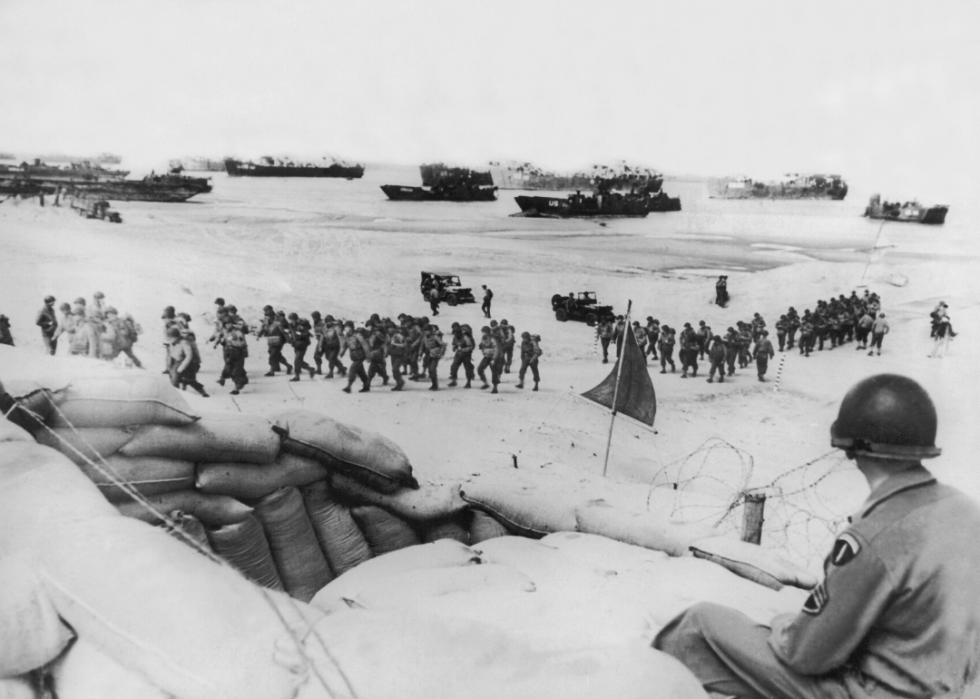
Many other famous people served on D-Day
Yankees catcher Yogi Berra took part in the D-Day invasion, as did author J.D. Salinger and slain civil rights activist Medgar Evers, who supported the invasion as part of a segregated unit. Golf great Bobby Jones was 40 when he successfully petitioned his Army Reserve commander to allow him to join the fray and Oscar-winning British actor David Niven was among the first officers to land; he won a U.S. Legion of Merit Medal. Before he played Scotty on “Star Trek,” James Doohan sustained six bullet wounds and lost his middle finger on Juno Beach. Actor Charles Durning—thrown into the first-wave at Omaha Beach—won a Silver Star and a Purple Heart and was among the only survivors from his landing group.
»»» Free National Prayer Gold Coin for American Patriots – How to Get It
[Pictured: An Allied soldier looks out over the Normandy operations underway on June 6, 1944.]

17 million maps were needed
Allied commanders planned meticulously for years, photographing the area from the air and painstakingly cataloging every detail of the landscape. In the end, war planners created 17 million maps to support D-Day operations.
[Pictured: U.S. Army generals review a map in Corsica in August 1944.]
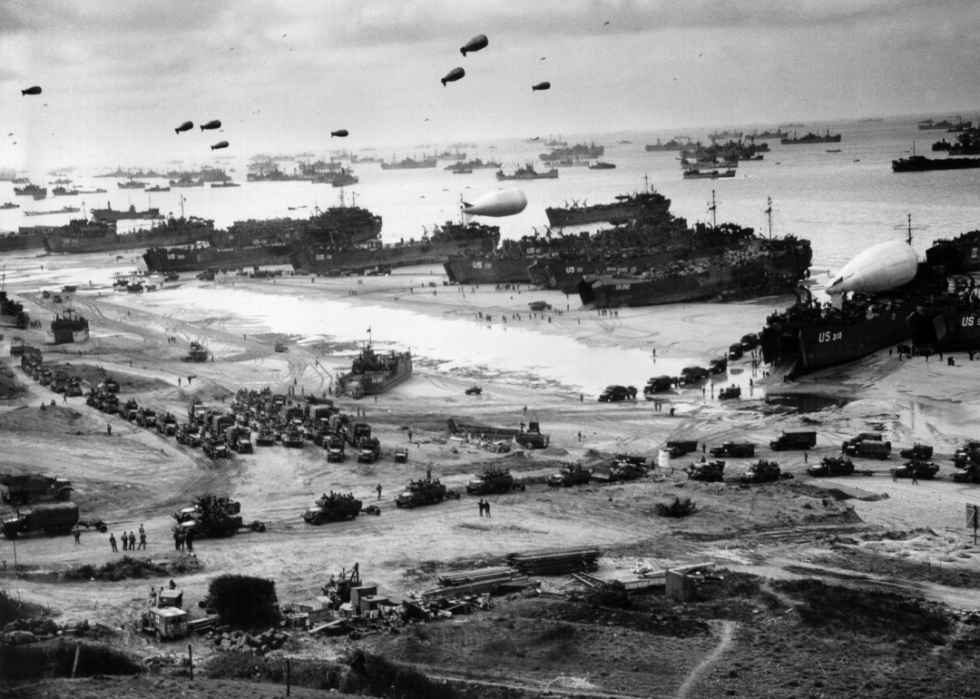
The landings opened a supply line
By establishing a beachhead, the Allies were able to open a supply chain that allowed desperately needed resources to flow into France. By June 11 (D+5), 104,428 tons of supplies, 54,186 vehicles, and 326,547 troops had followed in the footsteps of the first infantrymen to hit the shores.
[Pictured: Operations underway as landing ships put cargoashore on Omaha Beach in June 1944.]
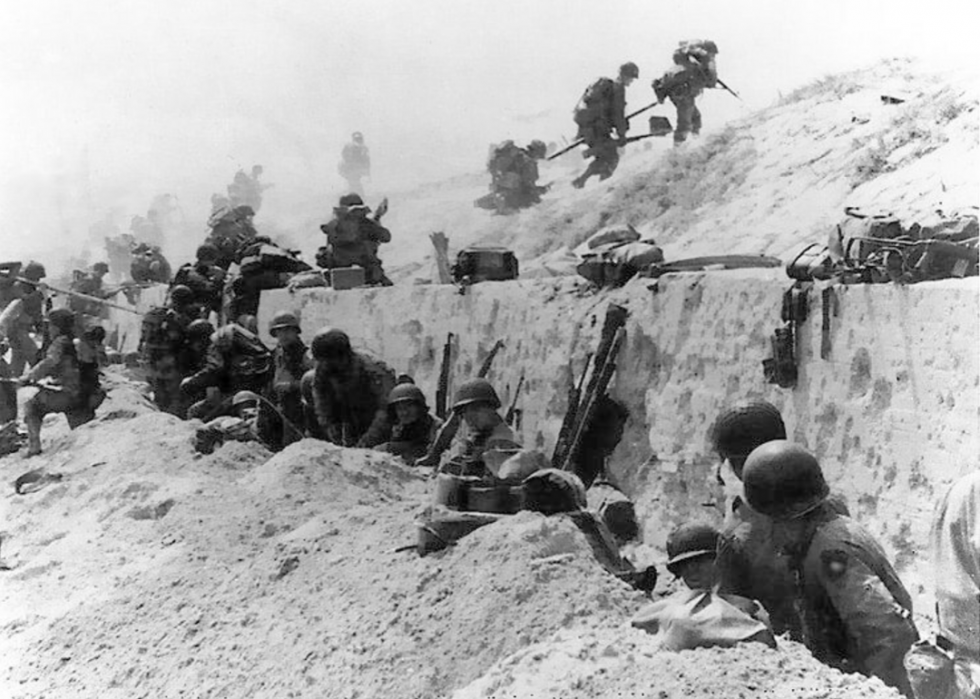
The Army attacked with 6 divisions
The 1st, 4th, and 29th Infantry divisions were called to serve in the D-Day landings. The 82nd and 101st Airborne divisions were there, too. Finally, a massive collection of non-divisional units served at Normandy, as well.
[Pictured: U.S. Soldiers of the 8th Infantry Regiment, 4th Infantry Division, move out over the seawall on Utah Beach after coming ashore.]
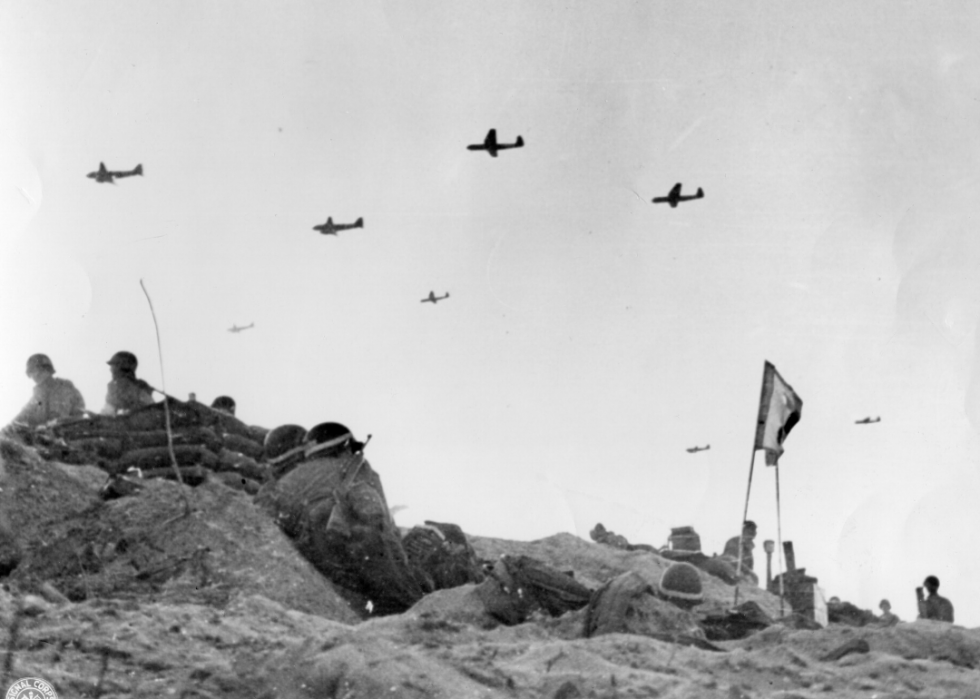
500 gliders took to the air
Five hundred primitive but effective motorless gliders were launched to support the paratroopers and their bungled parachuting mission behind enemy lines. Glider infantry carried not only weapons but badly needed signal and medical units. Although the pilots were technically Army Air Corps personnel, they became infantrymen the moment their aircraft hit the ground. Those aircraft were made of plywood.
[Pictured: Gliders bring supplies to troops on Utah Beach on June 6, 1944.]
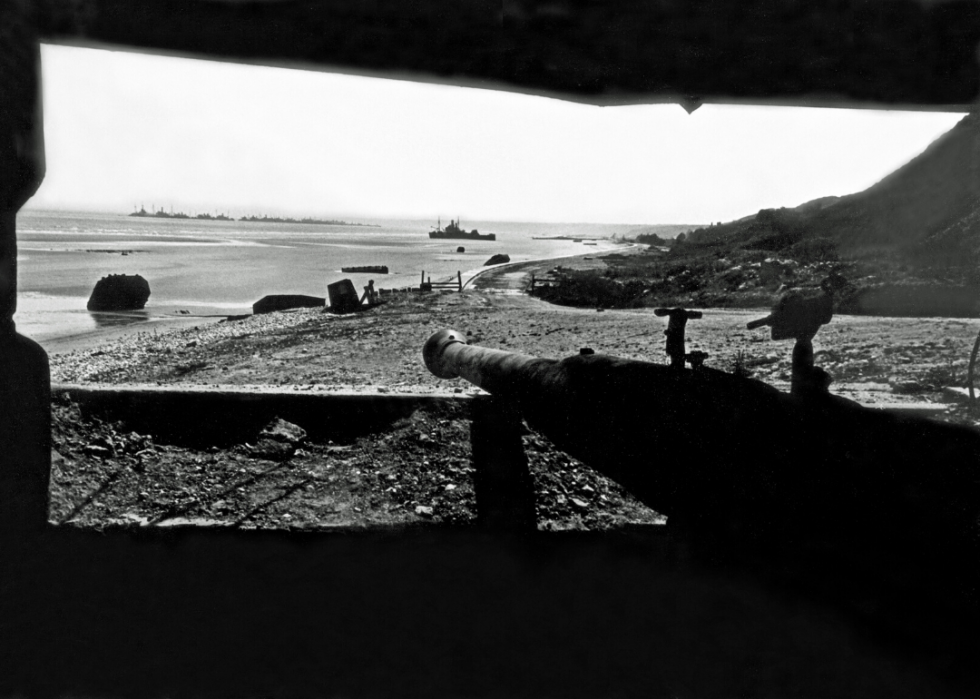
The mighty Atlantic Wall fell in a day
The 80 miles of the German Atlantic Wall that stretched along the coastline of France was believed to be impregnable by some commanders. It fell in a single day—June 6, 1944.
[Pictured: A view of the fallen Atlantic Wall on Omaha Beach in June of 1944.]

One African American combat unit participated
The Army was segregated during World War II and African American units were largely relegated to supporting roles and manual labor. On D-Day, however, a single segregated black unit participated in the landings: the 330th Barrage Balloon Battalion.
[Pictured: A platoon of African American troops prepare to eliminate a German sniper on June 10, 1944.]
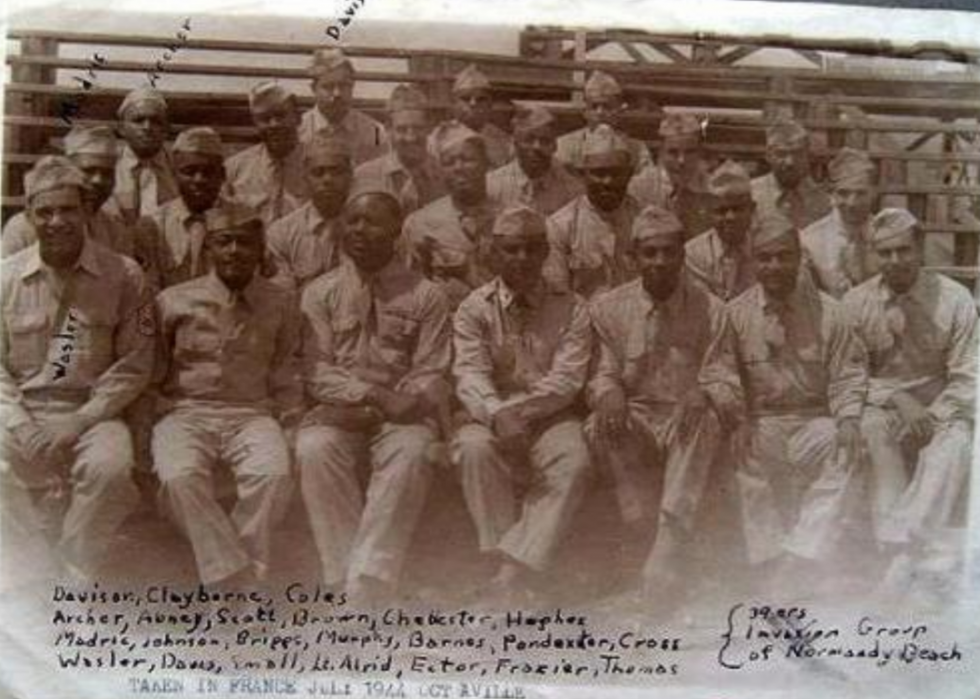
That unit’s medic is an unsung hero
Waverly B. Woodson Jr. served as a medic with the invasion’s only African American unit and, despite being badly injured himself, saved hundreds of lives—including four men he rescued from drowning. He ignored the constant threat of death and his own potentially mortal wounds while establishing a medical station where he treated at least 200 men for 30 hours before collapsing from exhaustion and his own injuries. In recent years, his incredible story emerged and his backers have pressed the military to award him the Medal of Honor.
[Pictured: A 1944 photo of some of the Normandy Beach invasion group of the 320th Anti-Aircraft Balloon Barrage Battalion.]
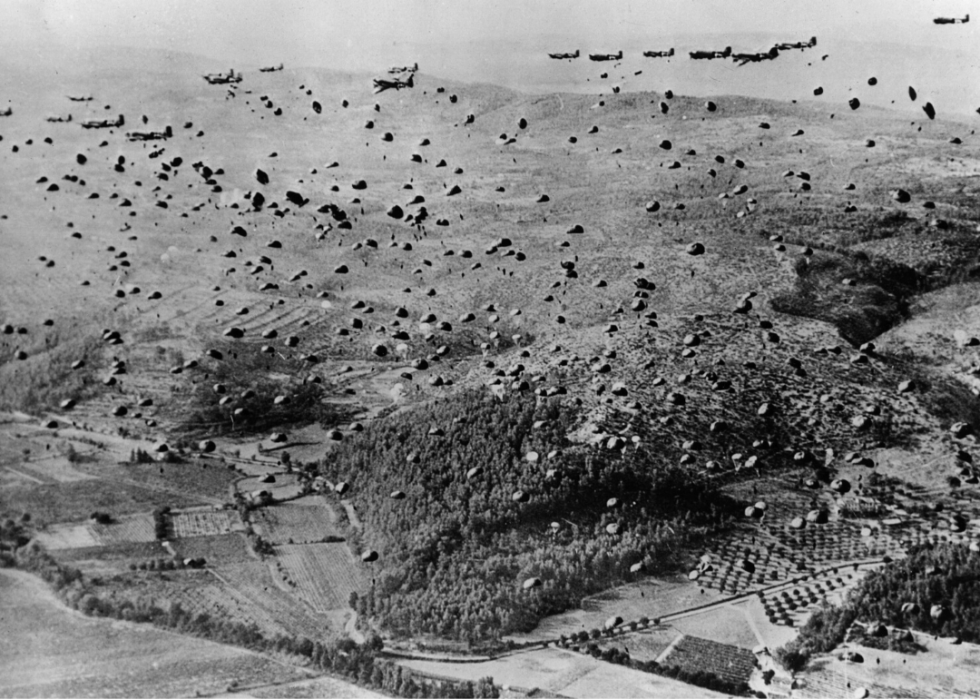
Germany surrendered less than one year later
The Normandy landings breached a continent that the Nazis had transformed into a fortress. It was the beginning of the end for Nazi Germany and a major turning point in the war. On May 7, 1945—less than one year after D-Day—Germany surrendered unconditionally to the Allies.
[Pictured: Allied solider parachutes and supplies fill the sky over the beachhead between Marseilles and Nice during the Allied Invasion of France in August 1944.]

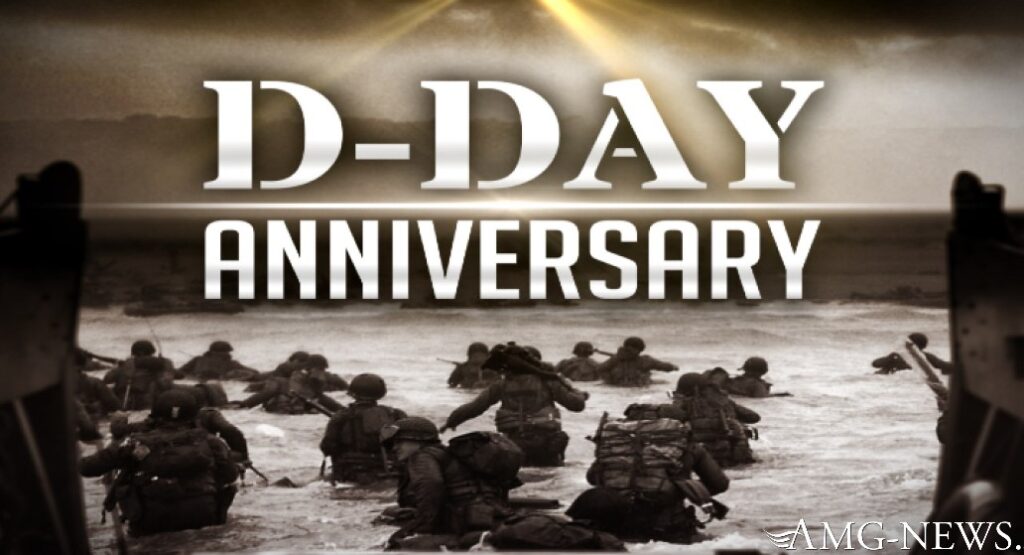






![BOOM! FULL-SCALE STRIKE: President Trump DECLARES WAR on Big Pharma’s Global Cartel — “No More Subsidizing Foreign Healthcare. No More Profiteering. It Ends NOW.” [VIDEO]](https://amg-news.com/wp-content/uploads/2025/05/TRUMP-BIG-PHARMA-CRACKDOWN-450x242.png)
